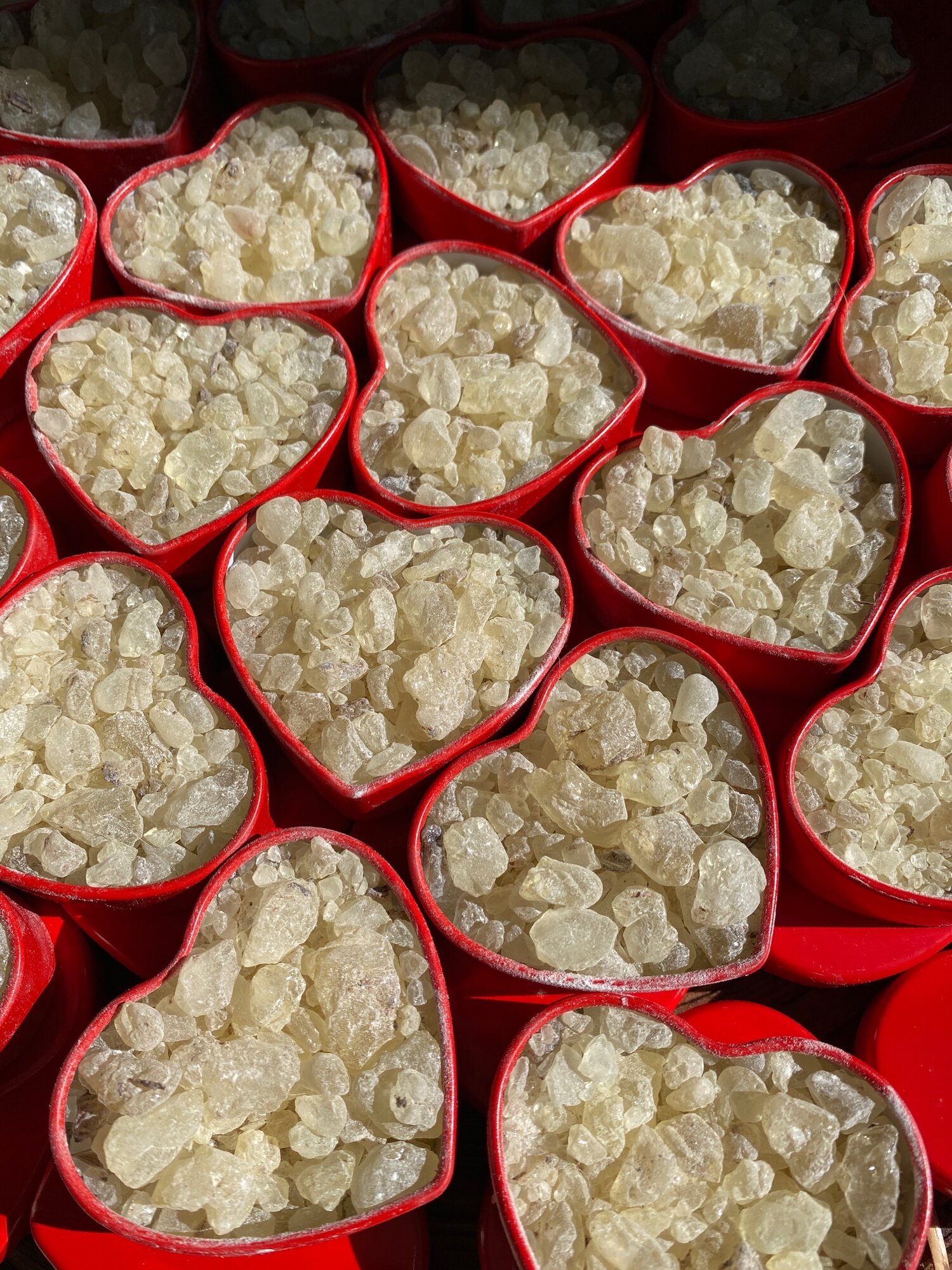The Rich History + Versatile Uses of Botanical Resins
Botanical resins have been treasured by countless cultures throughout history for their captivating aromas, healing properties, and diverse applications. Beyond their association with incense, these natural substances have found use in various realms, including traditional medicine, craftsmanship, and even culinary arts. Join me on a journey through time as we delve into the history and explore the multifaceted uses of botanical resins.
Ancient Origins:
1. Frankincense and Myrrh: These resins, harvested from Boswellia and Commiphora trees respectively, have been utilized since ancient times for their spiritual significance, medicinal properties, and ceremonial purposes.
2. Copal: Revered by the Mayans and Aztecs, copal resin played a central role in their rituals and offerings, serving as a bridge between the earthly and divine realms.
Medicinal Applications:
1. Traditional Chinese Medicine: Herbal remedies often include botanical resins like benzoin, dragon's blood, and mastic, known for their antimicrobial, anti-inflammatory, and wound-healing properties.
2. Ayurvedic Medicine: Resins such as guggul and frankincense have been employed in Ayurveda for their therapeutic benefits, addressing ailments ranging from arthritis to respiratory conditions.
Craftsmanship and Preservation:
1. Varnishes and Adhesives: Shellac, derived from the resinous secretion of the lac beetle, has been used for centuries in woodworking, instrument-making, and bookbinding due to its excellent adhesive and protective qualities.
2. Amber: Fossilized resin, or amber, has captivated artisans and collectors for its exquisite beauty. Crafted into jewelry, it preserves the ancient past and holds a mesmerizing allure.
Culinary Delights:
1. Gum Arabic: Extracted from the Acacia tree, gum arabic acts as a natural emulsifier, stabilizer, and thickening agent in various food and beverage preparations.
2. Mastic: Hailing from the Mediterranean region, mastic resin is a key ingredient in Greek cuisine, lending a unique flavor to desserts, liqueurs, and chewing gum.
Conclusion
Botanical resins have a rich and diverse history, intertwining with various aspects of human culture. From their early sacred significance to their role in medicine, craftsmanship, and culinary arts, these natural treasures continue to captivate and inspire. Explore the wondrous world of botanical resins and discover their timeless allure.
A silver heart-shaped tin filled with sustainably sourced, natural botanical resins + a roll of 10 charcoal tablets to burn it upon. Instructions are included.
Resin Choices:
(NEW!) The Venusian
Copal Blanca (White Copal) BESTSELLER
Copal Negra (Black Copal)
Copal de Oro (Amazon Gold Copal)
Ethiopian Frankincense
Frankincense + Myrrh Blend
7 Archangels
Sweet Myrrh
Celtic Blend






